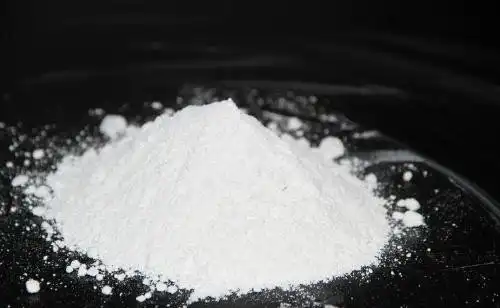Hebei Messi Biology Co., Ltd. stated that high-purity magnesium hydroxide is a white amorphous powder with an alkaline aqueous solution. It is soluble in dilute acid and ammonium salt solutions, and is almost insoluble in water and ethanol. It is characterized by large particle size, high purity, good whiteness, and easy absorption of carbon dioxide in the air. It is a commonly used raw material in industry.
The preparation methods of magnesium hydroxide are:
1. Physical crushing method
The physical crushing method refers to the direct crushing of ore, dry coarse grinding and wet ultrafine grinding to obtain the required particle size grade of magnesium hydroxide products. The most commonly used ore is brucite.
2. Ore calcination and hydration method
This method calcines the ore and hydrates the prepared magnesium oxide to prepare magnesium hydroxide. It is a process of magnesium oxide dissolution and magnesium hydroxide precipitation, in which the dissolution of magnesium oxide is the controlling step. Due to different ore compositions, magnesite is more commonly used.
3. Liquid phase precipitation method
There are two sources of raw materials for this method. One is that magnesite, dolomite, serpentine, etc. are treated by acid hydrolysis or other methods to obtain magnesium salts, which are precipitated with alkali to prepare magnesium hydroxide. The other is that magnesium salts obtained from seawater, salt lake water and well brine are precipitated with alkali to prepare magnesium hydroxide.

Application fields of magnesium hydroxide
1. Magnesium hydroxide is an excellent flame retardant for plastics and rubber products. In terms of environmental protection, it can be used as a flue gas desulfurizer to replace caustic soda and lime as a neutralizer for acidic wastewater. It is also used as an oil additive to play an anti-corrosion and desulfurization role. In addition, it can also be used in the electronics industry, medicine, sugar refining, as insulation materials and to manufacture other magnesium salt products.
2. The buffering performance, reaction activity, adsorption capacity, thermal decomposition performance, etc. of magnesium hydroxide are relatively excellent. It can be used as a chemical material and intermediate, and it is also a green environmentally friendly flame retardant and additive used in polymer materials industries such as rubber, plastics, fibers and resins. In the field of environmental protection, magnesium hydroxide is mainly used as a flame retardant, acid wastewater treatment agent, heavy metal remover, flue gas desulfurizer, etc.
3. This product can be used as a flame retardant or flame retardant filler added to polyethylene, polypropylene, polystyrene and ABS resin, with good flame retardant and smoke suppression effects, and the addition amount is 40~20 parts. However, the particle surface needs to be treated with anionic surfactants. Inexpensive anionic surfactants such as advanced fatty acid alkali metal salts or alkyl sulfates and sulfonated succinates can be used, and the dosage is about 3%. This product is also used in the manufacture of magnesium salts, the refining of sugar, the pharmaceutical industry, and daily chemicals.
4. Magnesium hydroxide is a new type of filling flame retardant. It releases bound water when decomposed by heat and absorbs a large amount of latent heat to reduce the surface temperature of the synthetic material it fills in the flame. It has the effect of inhibiting the decomposition of polymers and cooling the generated combustible gases. The decomposed magnesium oxide is also a good refractory material, which can also help improve the fire resistance of synthetic materials. At the same time, the water vapor it releases can also be used as a smoke suppressant.
Magnesium hydroxide is recognized as an excellent flame retardant with triple functions of flame retardancy, smoke suppression and filling in the rubber and plastic industry. It is widely used in rubber, chemicals, building materials, plastics and electronics, unsaturated polyesters, paints, coatings and other polymer materials. In particular, it can replace aluminum hydroxide for flame retardancy, smoke suppression and antistatic for mine air duct coating cloth, PVC whole core conveyor belt, flame retardant aluminum-plastic plate, flame retardant tarpaulin, PVC wire and cable material, mine cable sheath, and cable accessories, and has excellent flame retardant effect. Compared with similar inorganic flame retardants, magnesium hydroxide has better smoke suppression effect. Magnesium hydroxide does not emit harmful substances during production, use and disposal, and can also neutralize acidic and corrosive gases generated during combustion. When used alone, the dosage is generally 40%~60%, and it has good compatibility with the base resin. It is an excellent flame retardant for thermoplastic resins and rubber products. It is often used as an additive flame retardant or flame retardant filler in adhesives, with a reference dosage of 40~200 parts.
Industrially used for the manufacture of magnesium salts, active magnesium oxide, medicines, fine ceramics, insulation materials, sugar refining, flue gas desulfurizers, oil anticorrosive additives, acid wastewater neutralizers, color TV tube cones, glass, coatings, etc.
5. This product is also used in the manufacture of magnesium salts, sugar refining, pharmaceutical industry, daily chemical industry, etc. At the same time, the water vapor it releases can also be used as a smoke suppressant. Magnesium hydroxide is an excellent flame retardant with triple functions of flame retardant, smoke suppression and filling in the rubber and plastic industry.
6. The emulsion suspension of magnesium hydroxide is used as an antacid and laxative in medicine.
